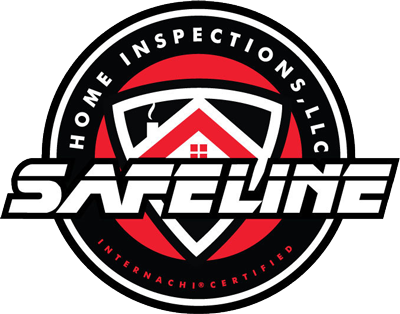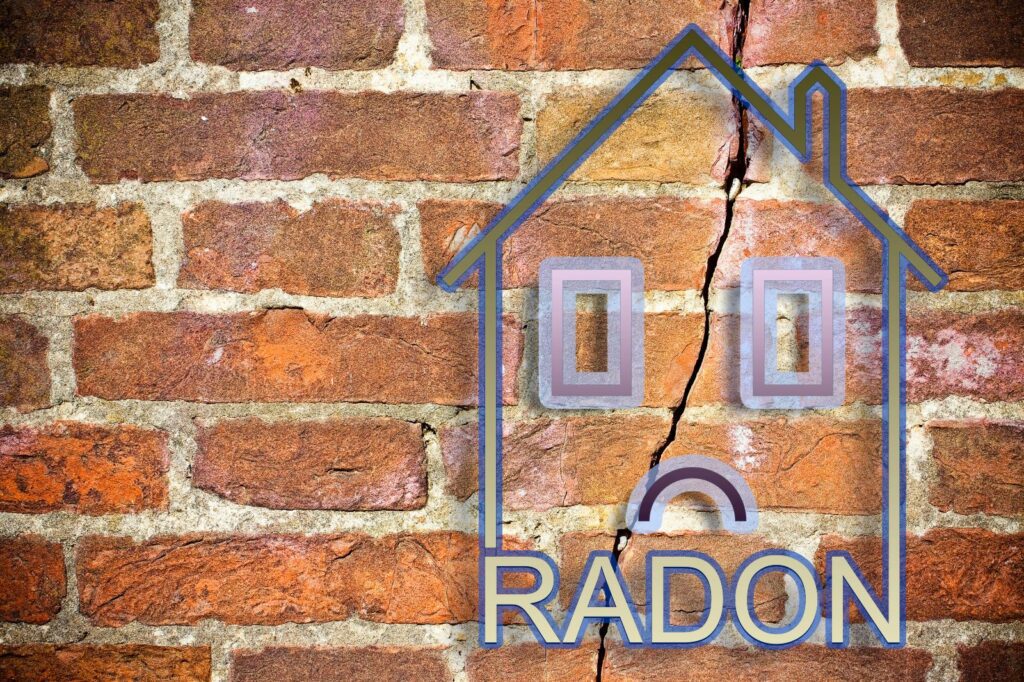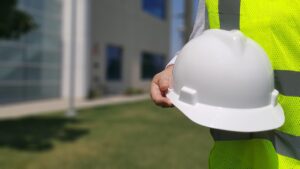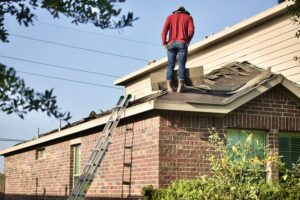Radon In Florida
Radon is a radioactive gas that occurs naturally in the environment, and it can be found in varying levels throughout the United States. However, Florida’s geology makes it particularly vulnerable to radon infiltration, which raises important questions about the potential health risks associated with radon exposure. What are the effects of radon exposure in Florida? How prevalent is radon in Florida? And most importantly, what can be done to reduce the risk of radon exposure in homes and buildings throughout the state? In this article, we will delve into the answers to these questions and explore the impact of radon in Florida. So, continue reading to find out!
What Is Radon?
Radon is a naturally occurring, radioactive gas produced by the decay of uranium in the ground. It can seep into homes and buildings and become concentrated, posing a severe health risk. While radon is present in the soil and rocks everywhere, its levels vary greatly by location. Furthermore, while radon levels are generally low outside, they can reach hazardous levels indoors.
The risk associated with radon is so high in indoor environments that when inhaled, it can damage the lining of the lungs and increase the risk of developing lung cancer. In fact, radon is the leading cause of lung cancer for non-smokers, responsible for an estimated 21,000 deaths each year in the United States. Do you see how huge this is?
But despite its dangers, radon is a gas that cannot be seen, tasted, or smelled. The only way to know if your home has elevated radon levels is to conduct a test. Fortunately, testing for radon is a simple and relatively inexpensive process that can help ensure the safety of a home or workplace. By understanding the risks associated with radon exposure and taking steps to mitigate them, we can protect ourselves and our loved ones from this dangerous gas.
Do Florida homes have Radon?
And now, you’re thinking. Could radon be present in my home? How long has it been there? You may even ask yourself whether it’s in places where a large number of kids are usually found, such as schools or daycares. Unfortunately, the answer is yes. Radon is present in Florida homes and is a significant concern due to the state’s unique geology.
Florida’s porous soil and bedrock allow radon to seep into homes and buildings, where it can become concentrated to dangerous levels. As a matter of fact, according to the Florida Department of Health, approximately one in five homes in the state has elevated levels of radon. Now, you may be wondering where the places they are found the most and how they got there. Don’t worry! Just stay with me now.
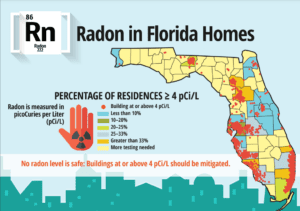
Radon in Florida found in slab homes.
Radon can be found in slab homes, which are homes that are built on a concrete slab foundation. In these homes, radon can enter through cracks and gaps in the concrete foundation, around plumbing, and through the water supply. In the case of cracks and gaps in the concrete foundation, radon can seep through the soil underneath the slab and enter the home through openings in the foundation. This is why homeowners with slab foundations need to seal any cracks or gaps in the foundation to prevent radon from entering the home.
Radon can also enter homes through the water supply. This is more likely to occur in homes with private wells, as public water systems are typically treated to remove radon. If radon is present in the water supply, it can be released into the air when water is used for showering or other purposes.
Radon in Florida found in basements and crawl spaces.
For homes in Florida that have basements or crawl spaces, radon can be a significant concern. These areas are typically more vulnerable to radon intrusion as they are in contact with the ground and have less ventilation than other parts of the home. However, it is worth noting that while radon is a common issue in many parts of the country, it is not very common in the Tampa area of Florida. This may come as a relief to some homeowners, but it is still essential for individuals to be vigilant and test their homes for radon regularly.
Interestingly, in Florida, basements are not a common feature in homes due to the high water table in the state. As such, basements are often replaced with crawl spaces or elevated slabs. In fact, some Floridians joke that the only “basement” in Florida is an indoor swimming pool due to the high water table. Despite this, radon testing remains an important consideration for homeowners in the state to ensure the health and safety of themselves and their families.
Radon in Florida found in apartment buildings.
Radon can also be found in apartment buildings. Radon can enter these buildings through cracks and gaps in the concrete foundation, just like in slab homes. In addition to foundation cracks, radon can also come from building materials, particularly those made from concrete. Building materials can contain small amounts of uranium and other radioactive elements, which can decay over time and release radon gas. In older buildings, the materials used in construction may be more likely to contain these elements and result in higher levels of radon.
Additionally, it is essential to note that the risks associated with radon exposure are not limited to single-family homes. In fact, people who live in multi-unit buildings or condos may be at even greater risk of exposure, as radon levels can accumulate more easily in shared spaces such as hallways, basements, and parking garages. If one unit in a building has elevated levels of radon, it is possible for neighboring units also to have elevated levels. Like other types of homes, testing for radon in apartment buildings or condos is essential to identify potential risks. If elevated levels of radon are found, building management or the landlord should take steps to reduce exposure and protect the health of the residents.
Radon found in schools and daycares.
Radon can also be found in schools and daycares, and this is a particularly concerning issue due to the potential for long-term exposure and the vulnerability of children. In Florida, it is required that all schools and daycare centers test for radon to ensure the safety of children and staff. Radon can enter schools and daycare centers through the same pathways as in homes, such as cracks and gaps in the foundation, and through building materials. In addition, these buildings often have less ventilation than homes, which can lead to higher levels of radon concentration.
Testing for radon in schools and daycare centers is crucial to identify any potential risks and take action to mitigate them. If elevated levels of radon are found, building management should take steps to reduce exposure and protect the health of the students and staff.
How To Test For Radon in Florida
And the moment you’ve been waiting for is finally here! So far, you’ve learned about radon, its impact on Florida residents, and the places they are likely to be. So what’s the deal? Fortunately, testing for radon is a relatively simple and inexpensive process that can provide valuable insights into the level of radon present in a home or building. In addition, regular tests can help identify any potential risks associated with radon exposure and take appropriate steps to mitigate these risks. There are two main types of radon tests: short-term and long-term.
Short term testing
Short-term testing for radon is a simple and cost-effective way to get a general idea of the radon levels in a home or building. This type of testing typically involves placing a radon test kit in the lowest livable area of the house for a period of two to seven days. The test kit is then sent to a laboratory for analysis, and the results provide a snapshot of the radon levels present in the home during the testing period.
While short-term testing can be a helpful first step in identifying potential radon risks, it is essential to note that this type of testing may not provide a completely accurate representation of long-term radon exposure. Radon levels can fluctuate over time, and short-term testing may not capture the full range of levels present in the indoor environment. For this reason, long-term testing is often recommended for individuals who want a more comprehensive understanding of their radon exposure.
Long term testing
Long-term testing for radon is a more comprehensive and accurate way to measure the average radon levels in a home or building over an extended period of time. This type of testing involves placing a radon test kit in the home for a period of 90 days or more. While long-term testing may require a more extended testing period and may be slightly more expensive than short-term testing, it can provide valuable insights into the level of radon present in a home or building and help to ensure a safe and healthy indoor environment.
Furthermore, it is particularly useful for individuals who want to assess their long-term exposure to radon, as it can help to identify any potential fluctuations in radon levels and provide a more complete picture of the risks associated with radon exposure. Plus, long-term testing can help to identify any potential sources of radon, such as cracks in the foundation or walls, and provide guidance on the best ways to mitigate exposure.
Different types of Radon testers
There are different types of radon testers that can be used for both short-term and long-term testing. These testers fall into two categories: active and passive.
Active testing vs. passive testing
Active testing involves using electronic devices that continuously monitor the radon levels in a building. This type of testing is more expensive than passive testing but provides more accurate and reliable results. Active testing can be done over a short period or an extended period, depending on the specific needs of the building. Passive testing, on the other hand, involves using devices that do not require any power source. Passive testers include charcoal canisters and alpha track detectors. These devices are placed in the building for a specific time and then sent to a lab for analysis. Passive testing is less expensive, but it may not provide as accurate results as active testing.
Some examples of active testers include:
1. Scintillation
Scintillation testers are a type of active radon testing device that uses a scintillation detector to measure the radon concentration in a building. These testers use a special crystal that emits light when it interacts with radon particles. The light emitted by the crystal is then detected and recorded by the device, providing an accurate measurement of the radon concentration. Scintillation testers are highly sensitive and can provide real-time readings of the radon levels, making them a popular choice for active testing in larger buildings or for situations where accurate and precise results are needed.
2. Ionization chamber
Ionization chamber testers are another type of active radon testing device that works by measuring the number of ions produced by the decay of radon particles. These testers use a small ionization chamber that is filled with air. When radon particles decay, they create charged particles that are detected by the ionization chamber. The number of ions produced is directly proportional to the concentration of radon in the air. Finally, they are often used in conjunction with other types of testing devices to provide a comprehensive assessment of the radon levels in a building.
3. Solid-state detection
Solid-state detection testers are a type of active radon testing device that uses a semiconductor sensor to measure the radon concentration in a building. These testers are small and portable, and they can provide real-time readings of the radon levels. Solid-state detection testers are highly sensitive and can detect very low radon levels in the air. They are also very fast and can provide results in just a few minutes. Solid-state detection testers are a popular choice for active testing where accuracy and speed are essential. However, they may not be as accurate as some other types, especially in situations with other sources of background radiation.
4. Continual monitoring
Continual monitoring is a type of active radon testing that involves using electronic devices to continuously monitor the radon levels in a building over an extended period of time. This type of testing is especially useful for buildings that are occupied for long periods, such as homes, schools, and workplaces. Continual monitoring devices are especially useful for identifying fluctuations in radon levels over time, which can help to identify the source of the radon and determine the best course of action for reducing the levels.
While continual monitoring devices are more expensive than other types of radon testing devices, they can provide a high level of accuracy and reliability, which is vital for buildings where the health and safety of occupants are a top priority.
It is important to note that both active and passive testing methods have their own advantages and disadvantages, and the choice of testing method should be based on the specific circumstances of the building being tested. Ultimately, the goal of testing for radon is to ensure that the levels of this radioactive gas are at safe levels to protect the health and safety of everyone who spends time in the building.
Pro testing vs. Store-bought testing
When it comes to testing for radon in a home or building, there are two main options: professional testing and store-bought testing kits. Let me elaborate!!
Professional testing involves hiring a professional radon testing service to come to your home or building and conduct a thorough radon test using specialized equipment and techniques. Professional testing can be more expensive than store-bought testing kits, but it provides a more comprehensive and accurate analysis of radon levels. In addition, some states require professional testing when buying or selling a home.
On the other hand, store-bought testing kits are typically less expensive than professional testing and can be purchased at hardware stores, home improvement stores, or online. However, store-bought kits may not be as accurate as professional testing, and the results may be affected by user error or other factors.
The choice between pro testing and store-bought testing depends on the individual’s budget, their specific testing needs, and their willingness to do the testing themselves or hire a professional. If the test results indicate high levels of radon, a professional service may be needed to provide additional advice and to help mitigate the problem. Have us test your home for radon.

Home Air Quality Monitors
In addition to the main types of radon testers, home air quality monitors can be a valuable tool for testing radon gas in a home or building. One such device is the AirThings Wave, an air quality monitoring system that measures radon levels and other factors such as temperature, humidity, and air pressure. The AirThings Wave is a small, battery-operated device that can be placed anywhere in the home. It uses sensors to monitor radon levels and provides real-time data through a mobile app, which allows users to track radon levels over time and receive alerts if levels exceed certain thresholds.
One advantage of the AirThings Wave and other home air quality monitors is that they are relatively easy to use and can be purchased at a lower cost than professional testing services. They also provide continuous monitoring, which can be helpful in identifying changes in radon levels over time. However, it is important to note that home air quality monitors may not provide the same level of accuracy or reliability as professional testing services.
Conclusion
As seen above, radon is a serious health hazard that can be found in homes, schools, and other buildings in Florida. Ultimately, the most important thing is to take radon testing seriously and ensure that the building is tested regularly and we, your home inspector in Tampa FL to protect the health and safety of everyone who spends time there.
References
[2] https://www.floridahealth.gov/environmental-health/radon/radon-faq.html
[3] https://independentamericancommunities.com/2018/11/27/fl-condo-associations-radon/
